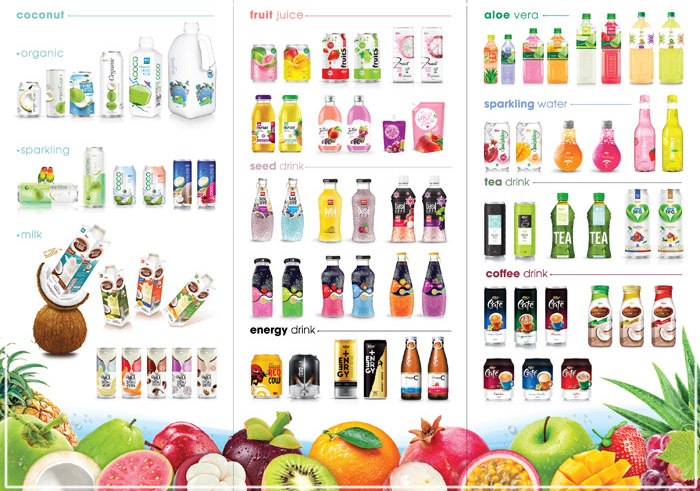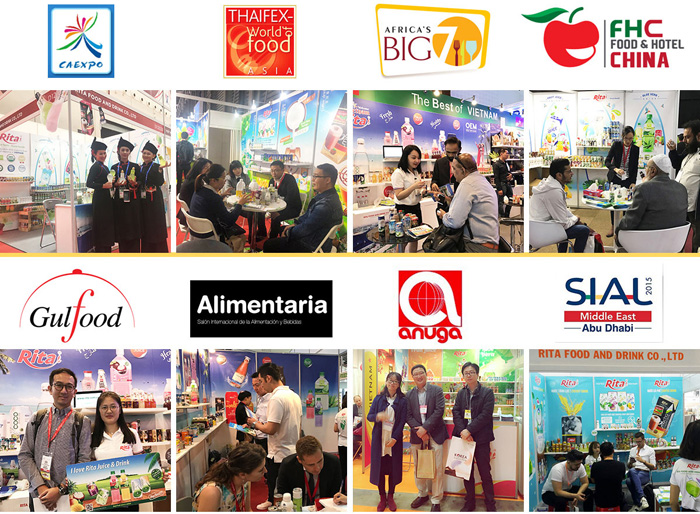Matcha has moved from Japanese tea rooms to coffee shop menus, Instagram feeds, and even ready-to-drink beverages worldwide. Yet, for newcomers, one question always comes first: what does matcha taste like?
Its striking emerald color promises something special—but its taste is not like typical green tea. Instead, matcha delivers a layered flavor experience: smooth, grassy, slightly sweet, with an umami richness that lingers. This article, presented by Rita Food & Drink Co.,Ltd, explores not just the flavor but also the production, culture, and market momentum behind matcha.
Key Takeaways
-
The Green Glow Explained: Matcha’s vivid color and deep flavor come from shade-grown tea leaves, which increase chlorophyll and L-theanine while softening bitterness. This makes matcha both visually striking and taste-rich.
-
Crafting the Flavor: The journey from tea bush to matcha involves shading, hand-picking, steaming, drying into tencha, and stone-milling into ultra-fine powder. True matcha is never instant—it is carefully milled to preserve aroma and mouthfeel.
-
Shading Styles Influence Taste: Whether using reed mats (honzu) or synthetic canopies (kanreisha), the shading duration (3–6+ weeks) shapes taste. Longer shading deepens umami and reduces astringency.
-
Quality Drivers: Cultivar selection, first-flush harvests, leaf de-veining, and slow grinding all play roles in defining matcha’s creaminess, smooth texture, and balanced sweetness.
-
From Tradition to Trend: Once central to Japanese tea ceremonies, matcha now powers global trends—appearing in lattes, desserts, smoothies, and ready-to-drink beverages as a visually stunning alternative to coffee.
What Does Matcha Taste Like?
At its core, matcha tastes like a marriage of earthiness and umami, balanced by a natural sweetness. Unlike steeped green tea, where the leaves are discarded, with matcha you consume the entire ground leaf. This delivers a full-bodied, creamy texture and a flavor that unfolds in stages:
- First Sip: A vegetal, grassy note—fresh like spring fields.
- Mid-Palate: Smooth umami, the savory “fifth taste” prized in Japanese cuisine.
- Finish: Lingering sweetness with minimal bitterness, depending on quality.
Premium ceremonial matcha tastes more velvety and sweet, while culinary matcha—often used in baking or lattes—has a stronger, more robust profile.
The Science Behind the Flavor
Matcha’s flavor compounds result from its growing process:
- Shading the leaves increases chlorophyll (color), amino acids like L-theanine (sweet, umami flavor), and lowers catechins (bitterness).
- Stone-grinding into micro-powder preserves volatile aromas and creates its signature frothy mouthfeel when whisked.
- First-harvest leaves (ichibancha) ensure a smooth, sweet taste compared to later harvests.
This harmony of cultivation and preparation creates the balanced answer to what does matcha taste like—rich yet refreshing.
Cultural Roots: From Zen Temples to Global Cafés
Matcha originated in Japan’s Zen Buddhist temples during the 12th century. Monks valued its flavor and calming effect during meditation. Over centuries, it became central to the Japanese tea ceremony (chanoyu)—a ritual emphasizing mindfulness, aesthetics, and respect.
Today, matcha has evolved beyond the tatami mat. Cafés in New York, London, and Ho Chi Minh City offer matcha lattes, while brands like Rita Food & Drink Co.,Ltd bring ready-to-drink matcha beverages to a global audience. The traditional taste has found new life in modern formats, from RTD cans to ice cream.
Global Market Insights: Matcha’s Rise
The worldwide appetite for matcha has surged, driven by its unique taste, vibrant look, and versatility:
- According to Allied Market Research, the global matcha market was valued at $2.67 billion in 2022 and is projected to reach $5.5 billion by 2032, growing at a 7.9% CAGR.
- North America and Europe are major growth regions, fueled by café culture and social media trends.
- Asia-Pacific remains the largest consumer, with Japan as the cultural home and China rapidly expanding production.

For beverage companies, matcha is more than a tea drinks—it’s a trend engine that taps into lifestyle, wellness, and aesthetics.
Matcha in Ready-to-Drink Beverages
One of the fastest-growing categories is matcha RTD drinks. Their appeal lies in combining traditional flavor with modern convenience. Rita Food & Drink Co.,Ltd has embraced this by developing smooth, refreshing matcha drinks that balance authentic flavor with innovative formats.
Compared to coffee-based RTDs, matcha offers:
- A smoother flavor profile with less bitterness.
- A vibrant green color ideal for visual marketing.
- Cultural cachet tied to Japanese tradition.
This makes matcha an essential player in the competitive global RTD market.
Regional Flavor Preferences
- Japan: Preference for ceremonial-grade matcha, consumed straight.
- North America/Europe: Matcha lattes, pastries, and smoothies dominate.
- Southeast Asia: Rising demand for RTD matcha beverages, blending tradition with tropical flavors.
Across regions, the answer to what does matcha taste like depends not just on cultivation but also on cultural palate and preparation style.
Market Trends: Social Media & Aesthetic Power
Matcha’s popularity owes much to Instagram and TikTok. Its neon-green hue stands out in feeds, driving viral recipes like “whipped matcha lattes.” Beyond visuals, the flavor delivers repeat value—distinct, recognizable, and versatile.
For brands like Rita, this dual appeal of taste + aesthetics provides a powerful marketing advantage.
Rita Food & Drink Co.,Ltd: Bringing Matcha to the World
As an international beverage manufacturer, Rita Food & Drink Co.,Ltd understands that today’s consumers seek both authenticity and accessibility. By sourcing quality matcha and crafting RTD solutions, Rita delivers beverages that:
- Preserve the authentic taste of Japanese matcha.
- Offer modern packaging for on-the-go lifestyles.
- Bridge tradition and innovation, appealing to both tea enthusiasts and first-time drinkers.
Through global distribution, Rita is positioning matcha not just as a flavor—but as an experience.
FAQs: What People Ask About Matcha
- What does matcha taste like compared to coffee?
Matcha is smoother, less bitter, and more vegetal, with a creamy umami depth. Coffee is more acidic and robust. - Is all matcha the same?
No. Ceremonial grade is sweet and delicate, while culinary grade is stronger and suited for mixing. - Why is matcha more expensive than regular green tea?
The shading, hand-picking, and stone-grinding process are labor-intensive, resulting in higher costs but superior flavor. - Does matcha always taste bitter?
High-quality matcha should not taste overly bitter. Bitterness usually indicates lower grade or improper preparation. - How can I enjoy matcha if I’m new to it?
Start with a matcha latte or RTD beverage. The milk balances grassy notes, making the flavor approachable.


